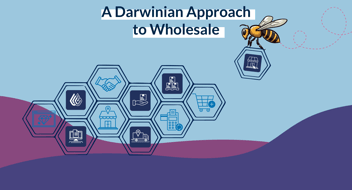CEO Corner: The Direct-to-Consumer Fantasy is Dead: Time to Stop Selling Alone
Once Upon a Click
There was a time (not long ago) when Direct-to-Consumer (DTC) was the golden child of commerce. Brands flocked to platforms like Shopify, slapped up a pixel-perfect website, launched Instagram ads, and watched as orders rolled in from eager shoppers who couldn’t get enough of this fresh new way to buy. No middlemen. No retailer markup. Just higher margins, cleaner data, and a direct line to the people who mattered most: the consumers.
It was beautiful.
Customer acquisition costs were manageable. Facebook ads were cheap and terrifyingly effective. Margins were plump. The “cut out the middleman” narrative practically sold itself. You didn’t need shelf space, trade shows, or a national sales team, just an amazing brand story and a few targeted lookalike audiences.
For a while, DTC felt invincible.
The Fantasy Meets Friction
Then reality hit. Hard.
The same channels that fueled DTC’s rise became its bottleneck. Facebook and Google ad costs skyrocketed. iOS privacy changes gutted tracking and attribution models. Competing DTC brands began crowding the same digital space, shouting over each other in a paid media arms race that only Big Tech truly won.
Suddenly, the math wasn’t mathing.
Margins shrank under the weight of rising Customer Acquisition Costs (CAC). Logistics nightmares and reverse logistics (returns!) turned operations into a Rubik’s Cube of diminishing profitability. Consumers, once loyal and starry-eyed, became fickle and fatigued, swiping past one more “authentic” brand story in search of the next discount code.
And let’s not forget the one word that keeps DTC founders up at night: scale.
What DTC Forgot: Retail Isn’t Dead, It’s Evolved
While DTC brands were busy disrupting retail, retailers were quietly adapting. The death of retail was greatly exaggerated. In fact, the smartest retailers leaned in, blending physical presence with digital savvy, offering curated in-store experiences that online-only brands couldn’t match.
And more importantly, retailers still controlled the shelf… and the staff behind it. That retail employee recommending your product to an unsure shopper? That’s gold. That’s influence. And DTC brands gave it up in exchange for a few more data points and a costly FedEx label.
As DTC brands hit the wall, many started to realize something profound: Wholesale isn’t old school. It’s next-gen smart.
The Rise of Modern Wholesale
Modern wholesale isn’t the dusty world of minimum order quantities and net-60 terms. It’s strategic. Agile. Data-informed.
Today’s wholesale isn’t about sacrificing control; it’s about extending your reach without bloating your burn. It’s about leveraging a distributed inventory, regional fulfillment, and on-the-ground brand advocacy. It’s about having your cake, and letting trusted partners help you serve it.
Consider this: when a retailer sells your product, it’s not just a transaction. It’s an endorsement. A moment of in-person influence you couldn’t replicate through pixels. Multiply that by thousands of stores? You’re not scaling, you’re compounding.
From CAC Wars to Collaborative Commerce
The brands winning today aren’t those clinging to a DTC-only identity. They’re the ones building hybrid models that integrate wholesale not as a side hustle, but as a strategic pillar. Take Nike, which reversed its earlier DTC push by rekindling wholesale relationships with Foot Locker, Macy’s and DSW to expand reach and offload excess inventory more efficiently. Or Peloton, which added Amazon and Dick’s Sporting Goods to its distribution to capture broader market demand beyond its own storefronts.
They’re reducing shipping costs and delivery times by fulfilling online orders in local markets. They’re avoiding stockouts by tapping into retailer inventory. They’re training and incentivizing retail employees to become ambassadors. They’re solving the channel conflict puzzle with technology, not by adhering blindly to outdated models.
DTC may have been the starting point, but it’s not the destination. Not anymore.
And Now, the (Mildly Biased) Solution
At this point, you might be wondering: who’s building the infrastructure to make this all work? How do brands actually execute this magical fusion of DTC efficiency and wholesale scale?
You’re in luck.
At Quivers, we built our platform precisely for this moment. A new era of commerce where wholesale is not only relevant, it’s essential. We empower brands to bridge their online presence with retail muscle, using tools like distributed order sharing, ambassador incentives, and sell-through analytics to grow smarter, not just louder.
Because the Direct-to-Consumer dream wasn’t a lie… it just needs a better sequel. And wholesale, when done right, is exactly that.

.png?width=1280&height=720&name=CEO%20Corner%20DTC%20Fantasy%20(1).png)


.png?width=352&name=CEO%20Corner%20--%20Unified%20Commerce%20(2).png)